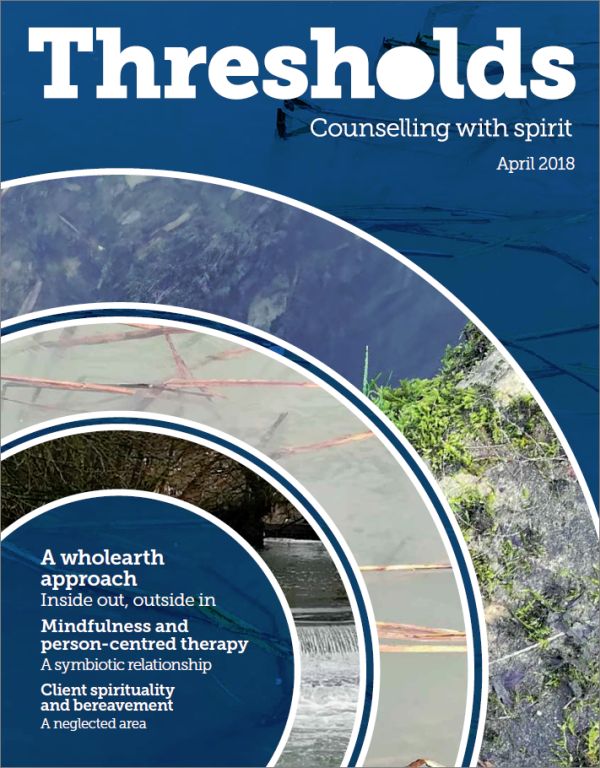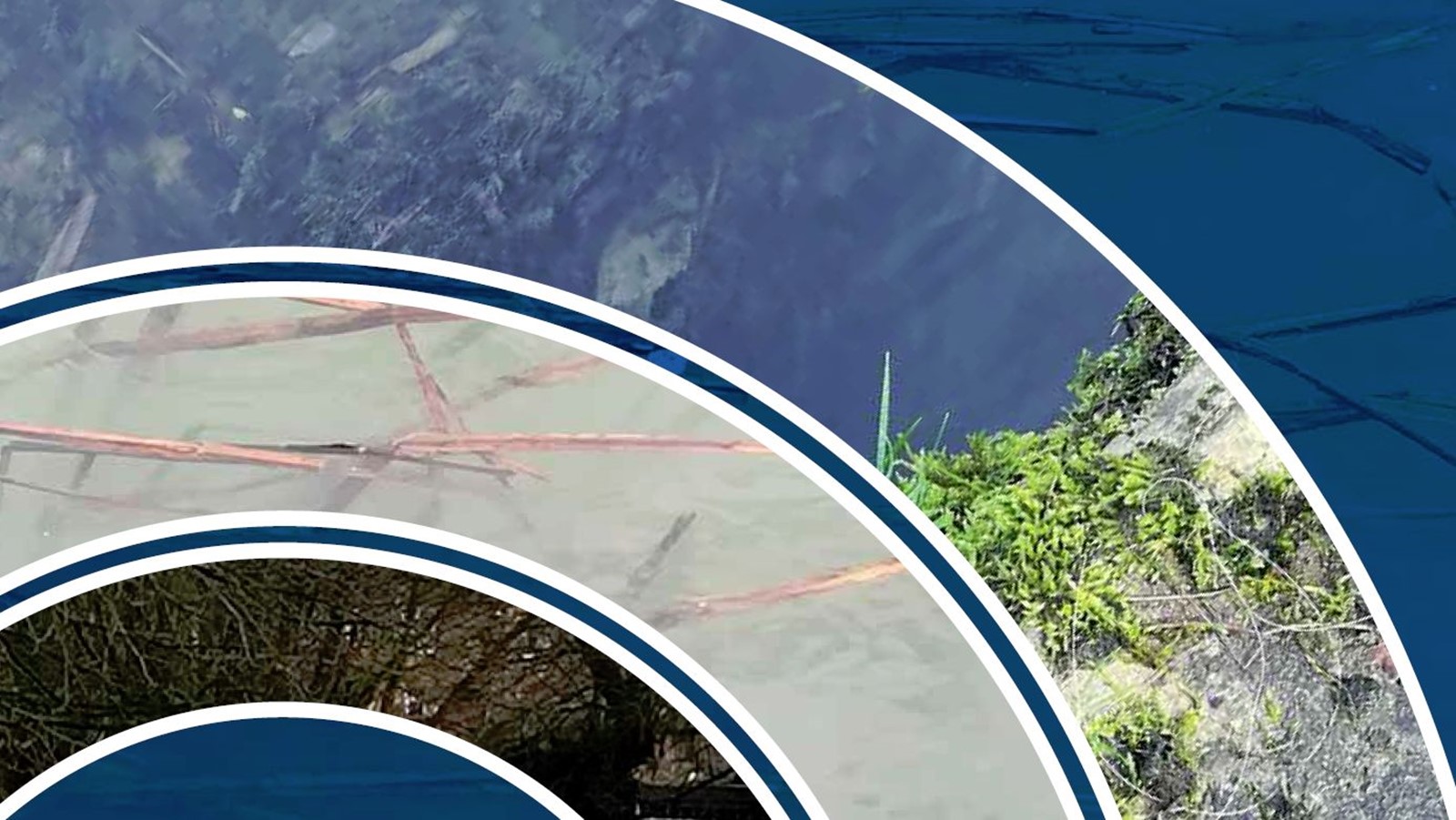In this issue
Features
Special focus
A wholearth approach (free article)
Ally Stott focuses on the broader implications of therapy
Opinion
The symbiotic relationship between mindfulness and person-centred therapy
Tracey Clare advocates the use of mindfulness with clients
Research
An exploration of counsellors’ lived experiences of the impact of client spirituality when bereavement is the presenting issue
Gill Harvey explores bereavement and spirituality
People
Bullying: personal, therapeutic and spiritual perspectives
Andrew De Smet reflects on a challenging experience
Perspectives
The grandparent/child relationship
Jerome Kerner describes the value of ageing and experience
Film review
Mark Leonard: Blade Runner 2049
Cultural perspectives
I have seen The Last Jedi
Amanda Anderson explores how film and TV may be therapeutic
Regulars

A pdf of this issue is available in the Thresholds archive.
Welcome from the editor
I often ask people I meet, ‘Where are you from?’, but a far more interesting question is, ‘Where do you belong?’ I’ve been reflecting on this question a lot, since reading Amy Liptrot’s book, The Outrun.1 It is a beautiful account of her recovery from addiction and her relationship with place. She describes how Orcadians (the people from the Orkneys) ask this question.
Belonging seems to be an appropriate theme for this issue of Thresholds. The UK’s Office for National Statistics has assessed young people’s sense of belonging to their neighbourhood as a way of looking at their social connections. ‘The proportion of young people who agreed or strongly agreed that they belong to their neighbourhood improved from 50 per cent in the period 2009 to 2010 to 57 per cent in 2014 to 2015 […] Young people aged 16 to 18 are more likely to feel they belong to their neighbourhood than either those aged 19 to 21 or 22 to 24. This may be because those in the younger age group are more likely to be living in the parental home where they grew up.’2
I find it sad to think that more than 40 per cent of young people don’t agree that they belong to their neighbourhoods. Toko-pa Turner, author of Belonging, describes many different forms of belonging: to a community or a geography, to a family, to someone in an intimate relationship, to a purpose or vocation, to a set of ways or traditions, to our bodies, to our own stories, with the earth itself, to something greater than ourselves.3 I took part in an online journeying practice during the Sounds True shamanic summit, The Power of Shamanism. Julie Kramer, a shamanic practitioner, invited the participants to journey to a tree in their neighbourhoods and spend time reflecting on this tree. I chose one I liked in the Botanic Gardens in Oxford. After the journey, I decided to google the tree and I discovered that it had been felled in 2014. It was very sad news and I felt rather out of touch with my neighbourhood.
Ally Stott describes her wholearth approach to therapy. She takes her clients outdoors and explores their relationship to the earth. In her article, she tells her personal story of her relationship with place, the grief she encountered when leaving the place she grew up in and the journey to relationship with the place she now lives in. Our relationships with our landscapes are vital for connection and belonging.
Mindfulness techniques, such as body scan meditations, can encourage us to return to a sense of belonging in the body. Embodiment is a popular word in therapy. What does it mean to be embodied? Tracey Clare offers us detailed case histories showing methods of working with mindfulness resources, such as apps and websites.
BACP has just announced a special partnership with Cruse Bereavement Care.4 Working with bereaved clients is a very valuable area; I did my first placement with Cruse. Gill Harvey explores the relationship between spirituality and bereavement, an often ignored area.
People who are bullied often feel they don’t belong or aren’t welcome. Andrew De Smet has written an account of his own experience of being bullied and working with victims of bullying. How can we, as counsellors and therapists, work with those who experience bullying?
Too often, ageing is perceived negatively, and in our societies older people are often ignored, and loneliness is rife. The wisdom of experience is often not valued. Last year, I was fortunate to attend a workshop run by Jerome Kerner about ageing. Jerome writes in this issue about the important role of grandparenting.
I recently celebrated my 55th birthday. One of my birthday treats was to visit the cinema to see The Last Jedi. I offer some thoughts on cinema, TV and spirituality.
So, I return to the question ‘Where do I belong?’ and encourage all of us to consider it too.
Amanda Anderson
Editor
thresholds.editorial@bacp.co.uk
References
1. Liptrot A. The outrun. London: Canongate Books; 2016.
2. https://www.ons.gov.uk/peoplepopulationandcommunity/wellbeing/articles/youngpeopleswellbeingandpersonalfinance/2017#social-support-personal-security-and-sense-of-belonging (accessed 5 March 2018).
3. Turner T. Belonging: remembering ourselves home. Salt Spring Island, BC: Her Own Room Press; 2017.
4. https://www.bacp.co.uk/news/2018/15-february-2018-new-partnership-champions-counselling-for-bereaved-people/ (accessed 5 March 2018).
